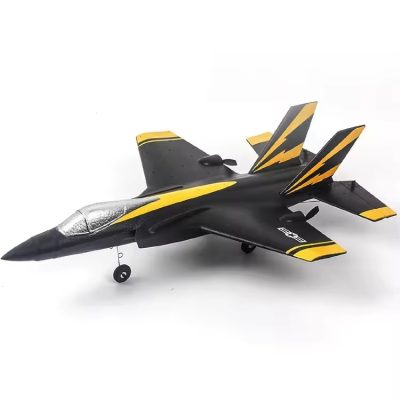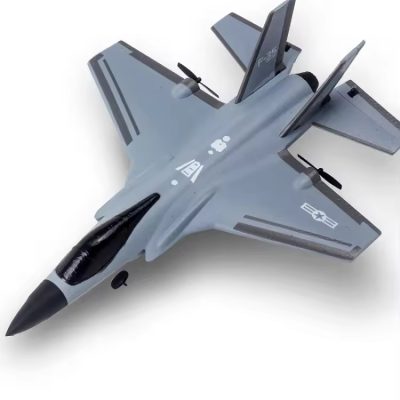Introduction
RC airplanes come in various types, each designed for specific flying styles and skill levels. For beginners, understanding the differences between these types is essential for choosing the right model to start with. In this blog post, we’ll explore the different types of RC airplanes and their characteristics, helping you make an informed decision and kickstart your RC flying hobby.
1. Trainer Airplanes
Trainer airplanes are designed specifically for beginners and novice pilots:
- High-Wing Configuration: Trainer airplanes typically have high-wing designs, providing greater stability and easier control. The wings are mounted above the fuselage, making them less prone to stalling.
- Forgiving Flight Characteristics: Trainers are known for their gentle flight characteristics, making them ideal for learning basic flying skills. They have self-righting tendencies, meaning they naturally return to level flight when controls are released.
- Durable Construction: Many trainer models are built from durable materials like EPO foam, which can withstand crashes and rough landings. This durability is essential for beginners who are likely to experience mishaps.
2. Park Flyers
Park flyers are small, lightweight RC airplanes designed for flying in smaller spaces like parks and fields:
- Compact Size: Park flyers are generally smaller than other RC airplanes, making them easy to transport and store. Their compact size allows for convenient flying in restricted areas.
- Low Speed: These airplanes are designed to fly at lower speeds, providing beginners with more time to react and make corrections. This makes them suitable for relaxed, leisurely flying.
- Electric-Powered: Most park flyers are powered by electric motors, which are quiet and easy to maintain. Electric power systems are user-friendly and ideal for new pilots.
3. Gliders
Gliders are unpowered or minimally powered RC airplanes designed for soaring and long-duration flights:
- Extended Flight Times: Gliders can stay airborne for extended periods by taking advantage of thermal currents and wind. This makes them perfect for pilots who enjoy extended, relaxed flights.
- Minimal Power Requirements: Some gliders are purely unpowered, while others may have small electric motors for assisted takeoffs and climbs. Their minimal power requirements make them efficient and easy to manage.
- Smooth and Silent Flight: Gliders are known for their smooth and silent flight characteristics, offering a serene flying experience. They are excellent for pilots who appreciate the art of soaring.
4. Sport Airplanes
Sport airplanes are versatile RC aircraft designed for a variety of flying styles, from casual cruising to mild aerobatics:
- Medium Wing Configuration: Sport airplanes often have a medium-wing configuration, striking a balance between stability and maneuverability. They are suitable for pilots with some flying experience.
- Aerobatic Capabilities: While not as specialized as dedicated aerobatic planes, sport airplanes can perform a range of basic aerobatic maneuvers like loops, rolls, and inverted flight. This makes them a great choice for pilots looking to advance their skills.
- Electric or Gas-Powered: Sport airplanes can be powered by either electric motors or gas engines, offering flexibility in terms of power sources. Electric models are generally quieter and easier to maintain.
5. Scale Models
Scale models are detailed replicas of real-world aircraft, designed for realism and aesthetic appeal:
- Realistic Appearance: Scale models are meticulously crafted to resemble their full-size counterparts, including accurate details and paint schemes. They are ideal for enthusiasts who appreciate the beauty of aviation history.
- Varied Performance: The performance of scale models varies depending on the type of aircraft they replicate. Some may prioritize realistic flight characteristics over extreme maneuverability.
- Skill Level: Scale models can range from beginner-friendly to highly advanced, depending on the complexity and fidelity of the replica. Beginners should start with simpler scale models and gradually work their way up to more detailed replicas.
Conclusion
Understanding the different types of RC airplanes helps beginners choose the right model for their skill level and flying preferences. Trainer airplanes, park flyers, gliders, sport airplanes, and scale models each offer unique characteristics and advantages. By selecting the appropriate type, you can enjoy a rewarding and enjoyable RC flying experience, gradually advancing your skills and exploring new aspects of this exciting hobby.








